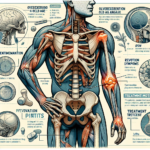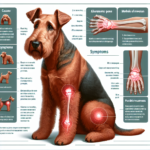Harrier Joint Pain: Causes, Symptoms, Prevention, and Treatment

Introduction
The Harrier is a medium-sized hound dog breed known for its exceptional hunting skills, particularly in tracking hares and foxes. Originating from England, the Harrier has a rich history dating back to the 13th century. These dogs are characterized by their strong, muscular build, keen sense of smell, and high energy levels. They are often described as a smaller version of the English Foxhound, with a friendly and outgoing temperament that makes them excellent family pets as well as skilled hunters.
General Health Concerns
Like many purebred dogs, Harriers are prone to certain health issues. Common concerns include hip dysplasia, ear infections, and eye problems. However, one of the most significant health issues that can affect Harriers is joint pain. Given their active lifestyle and genetic predispositions, joint health is a critical aspect of their overall well-being.
Importance of Joint Health in Harriers
Joint health is particularly important for Harriers due to their high activity levels and the physical demands of their hunting and tracking activities. Healthy joints are essential for maintaining their mobility, agility, and overall quality of life. Neglecting joint health can lead to chronic pain, reduced activity, and a diminished quality of life for these energetic dogs.
Breed-Specific Joint Pain Risks
Genetic Predisposition
Harriers, like many other breeds, have a genetic predisposition to joint-related issues. Hip dysplasia is one of the most common genetic conditions affecting Harriers. This condition occurs when the hip joint does not fit properly into the hip socket, leading to pain and arthritis over time. Elbow dysplasia is another genetic issue that can affect Harriers, causing similar pain and mobility issues in the front legs.
Age-Related Risks
As Harriers age, the risk of developing joint pain increases. Older Harriers are more susceptible to arthritis, a condition characterized by the inflammation of the joints. This can lead to stiffness, pain, and reduced mobility. Owners should be particularly vigilant as their Harrier reaches middle age, typically around 6-8 years old, as this is when joint issues are more likely to manifest.
Activity Level and Joint Stress
Harriers are known for their high energy levels and love for physical activity. While regular exercise is essential for their overall health, excessive or inappropriate exercise can put undue stress on their joints. Activities such as long-distance running, jumping, and rough play can exacerbate joint issues, especially if the dog already has a genetic predisposition to such problems.
Common Symptoms of Joint Pain in Harriers
General Symptoms
- Limping: One of the most noticeable signs of joint pain is limping or favoring one leg over the other.
- Stiffness: Stiffness, particularly after rest or sleep, can indicate joint pain.
- Reluctance to Move: A Harrier that is reluctant to engage in physical activities it once enjoyed may be experiencing joint pain.
- Swelling: Swelling around the joints can be a sign of inflammation and pain.
- Behavioral Changes: Irritability or changes in behavior can also indicate discomfort or pain.
Breed-Specific Symptoms
In Harriers, joint pain may manifest more prominently during or after physical activities such as hunting or running. Owners may notice their Harrier slowing down during these activities or taking longer to recover afterward. Additionally, Harriers may exhibit a noticeable decrease in their usual enthusiasm for play and exercise.
When to Consult a Vet
If you observe any of the above symptoms in your Harrier, it is crucial to consult a veterinarian. Early diagnosis and treatment can significantly improve the quality of life for a dog suffering from joint pain. Persistent limping, noticeable swelling, or a sudden change in activity levels should prompt an immediate veterinary consultation.
Preventive Measures for Joint Health
Exercise Recommendations
Regular, moderate exercise is essential for maintaining joint health in Harriers. Activities such as walking, swimming, and controlled play are excellent options. Avoid high-impact activities like jumping or long-distance running, especially on hard surfaces. Consistent, low-impact exercise helps keep the joints flexible and muscles strong without causing excessive stress.
Dietary Suggestions
A balanced diet rich in essential nutrients can support joint health. Foods high in omega-3 fatty acids, such as fish oil, can help reduce inflammation. Supplements like glucosamine and chondroitin are also beneficial for maintaining joint cartilage. Consult your veterinarian for specific dietary recommendations tailored to your Harrier’s needs.
Weight Management
Maintaining a healthy weight is crucial for reducing joint stress. Excess weight puts additional pressure on the joints, exacerbating pain and inflammation. Regularly monitor your Harrier’s weight and adjust their diet and exercise routine as needed to keep them at an optimal weight.
Early Screening and Monitoring
Early screening for joint issues can help catch problems before they become severe. Regular veterinary check-ups, including X-rays and physical examinations, can identify early signs of joint problems. Genetic testing can also help determine if your Harrier is predisposed to conditions like hip or elbow dysplasia.
Treatment Options for Joint Pain
Non-Surgical Treatments
Non-surgical treatments are often the first line of defense against joint pain. These may include:
- Medications: Anti-inflammatory drugs and pain relievers can help manage symptoms.
- Physical Therapy: Exercises and therapies designed to improve joint function and reduce pain.
- Lifestyle Adjustments: Modifying activities to reduce joint stress and incorporating joint-friendly exercises.
Surgical Options
If non-surgical treatments are not effective, surgical interventions may be necessary. Common surgical options for joint pain in Harriers include:
- Hip Replacement: Replacing the damaged hip joint with an artificial one.
- Arthroscopy: A minimally invasive procedure to clean out the joint and remove damaged tissue.
- Osteotomy: Cutting and realigning bones to improve joint function.
Alternative Therapies
Alternative therapies can also be beneficial for managing joint pain in Harriers. These may include:
- Acupuncture: Using needles to stimulate specific points on the body to relieve pain.
- Hydrotherapy: Water-based exercises that reduce joint stress while improving mobility.
- Massage: Therapeutic massage to relieve muscle tension and improve circulation.
Lifestyle and Management Tips
Daily Care Routine
A consistent daily care routine can help manage and alleviate joint pain in Harriers. This may include:
- Regular, low-impact exercise such as walking or swimming.
- A balanced diet with joint-supporting supplements.
- Weight management through portion control and regular exercise.
- Regular veterinary check-ups to monitor joint health.
Modifying the Home Environment
Making your home more comfortable for a Harrier with joint pain can significantly improve their quality of life. Consider the following modifications:
- Installing ramps to help your dog navigate stairs.
- Providing orthopedic beds to support their joints while resting.
- Using non-slip mats to prevent falls on slippery surfaces.
Long-Term Management
Long-term management strategies are essential for keeping your Harrier active and happy despite joint pain. These may include:
- Consistent monitoring of their condition and adjusting treatments as needed.
- Maintaining a regular exercise routine tailored to their abilities.
- Continuing with dietary supplements and a balanced diet.
- Regularly consulting with your veterinarian to ensure optimal joint health.
FAQs About Harriers and Joint Pain
What are the early signs of joint pain in Harriers?
Early signs of joint pain in Harriers include limping, stiffness, reluctance to move, and behavioral changes such as irritability or decreased enthusiasm for physical activities.
Can joint pain in Harriers be prevented?
While genetic predispositions cannot be entirely prevented, maintaining a healthy weight, providing regular low-impact exercise, and offering a balanced diet with joint-supporting supplements can significantly reduce the risk of joint pain.
Are there specific exercises that are better for Harriers with joint pain?
Yes, low-impact exercises such as walking, swimming, and controlled play are ideal for Harriers with joint pain. These activities help maintain joint flexibility and muscle strength without causing excessive stress.
When should I consult a vet about my Harrier’s joint pain?
If you notice persistent limping, noticeable swelling, or a sudden change in your Harrier’s activity levels, it is crucial to consult a veterinarian. Early diagnosis and treatment can significantly improve your dog’s quality of life.
What dietary supplements are beneficial for Harriers with joint pain?
Supplements such as glucosamine, chondroitin, and omega-3 fatty acids can support joint health and reduce inflammation. Always consult your veterinarian before adding any supplements to your dog’s diet.
Conclusion
Joint pain is a significant concern for Harriers, given their genetic predispositions and high activity levels. By understanding the causes, symptoms, preventive measures, and treatment options, owners can take proactive steps to ensure their Harrier’s joint health. Regular veterinary check-ups, a balanced diet, appropriate exercise, and early intervention are key to maintaining a happy and active life for your Harrier. Always consult your veterinarian for personalized advice and treatment plans tailored to your dog’s specific needs.



